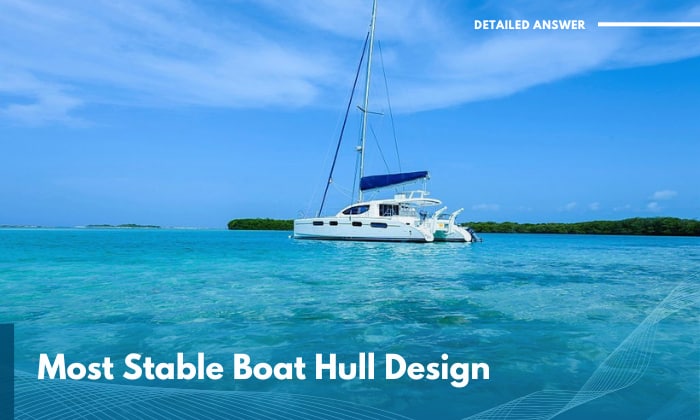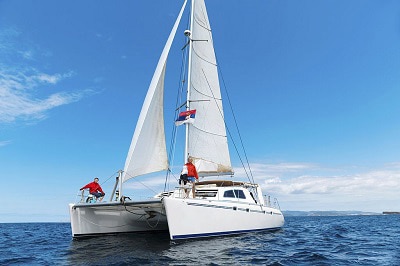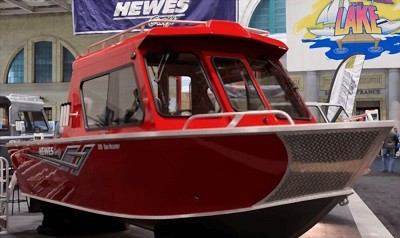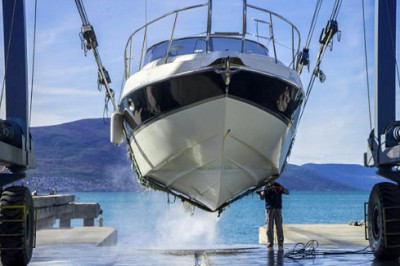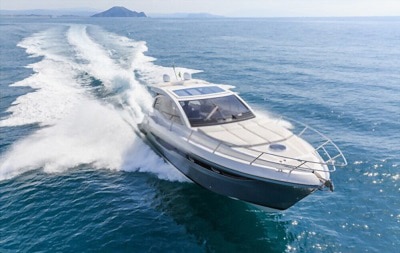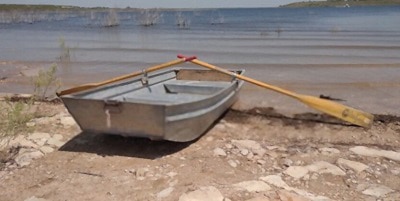As boaters, we may not say it out loud, but we have an innate instinct to get the most out of our vessels. As much as possible, we don’t want our watercraft to get the short end of the stick in terms of speed, storage, efficiency, and, finally, stability.
We want it to perfectly fit our preferences like a glove to a hand. As such, wanting to know the most stable boat hull design is entirely reasonable.
The short answer is you should go for most multi-hulled options. Check out a double hull boat or deep v hull boats.
Table of Contents
The Most Stable Hull Design
Based on the answer above, there’s no single “most stable boat design”. There are two boat hull shapes vying for that top spot, and at best, they’re tied if we consider their unique advantages and disadvantages.
Plus, it’s not like the shape of boat is the sole factor we need to be looking at in terms of stability. For example, the keel and rudder design play just as much of a big role in generating lift that lends to that, too.
To get down pat on this subject, let’s take a closer look at the hull design for boats I mentioned above.
1. The Case for Catamarans
People will argue that a multi-hull is the most stable, and I don’t mind saying that oftentimes I agree with them. If you’ve ridden a catamaran before, won’t you say the same?
- These vessels have two parallel hulls (hence, the term multi- or double-hull) with a wider beam that allows them to cover a larger surface area in the water and effectively handle changes to center of gravity.
The hulls lead to a lower CG, which is an important factor in balancing anything including boats.
- On the other side of the coin is buoyancy, which this vessel packs plenty Catamarans have a great center of buoyancy because it is also concentrated between the two submerged hulls, the same as the vessel’s center of gravity.
As long as there’s harmony between these two elements (i.e. CG sits above CB), you can expect almost picture-perfect stability in any vessel due to the naturally higher tilt resistance in such a setup. And, yes, this is true even in instances when strong winds and waves batter the catamaran.
Got a slight fear of boating but can’t get enough of the sea life? That near-unsinkable vessel may be the best option for you.
Feel free to take it up a notch further with a trimaran while you’re at it! Or if you like fishing, a tri-hull may be a better partner.
Don’t get too carried away, though, as these vessels are not entirely invincible. For instance, once they go belly-up, they often have a hard time flipping over again like a turtle.
Obviously, the points I shared above barely scratch the surface of boat stability.
2. What About Those Venturesome V-Hulls?
Think of a deep V hull sailboat or powerboat. Already, they beat those flat bottom boat types because they’re able to cut through the water and waves with ease.
Indeed, if we ask boat dealers and examiners about a speed boat hull design with this specific characteristic, they’re quick to point out that they’re the best performers in choppier conditions.
The hull’s shape allows it to act like a keel that boosts stability while maintaining high speeds. This is why they’re ubiquitous in any kind of offshore hull design built for racing, much like their double-hulled cousins.
However, like most kinds of boat hulls, they’re not perfect.
In fact, they’re actually one of the least efficient hull designs, especially when it comes to sailing speed, and contribute to poor visibility.
Read more: Flat bottom vs v hull jon boat: which is better?
Other Notable Types of Boat Hulls
1. Planing
Planing hulls are more of an umbrella category that includes V hulls, round bottoms, and pontoons. As their name readily suggests, they give boats the ability to get up on plane.
That means they can raise the bow high enough to be able to reduce water resistance and move more smoothly and quicker on the water. Many consider these built-for-agility hulls the fastest boat hull design for this reason.
2. Displacement
These hulls are designed to push or “displace” water as they move, hence their name. Consequently, V-hulls fall under this category as well.
Most displacement hulls other than V-hulls come to a close second in terms of stability due to their innate size advantage and, of course, their unique design.
3. Semi-Displacement
More of a hybrid displacement/planing hull, it combines the best of both worlds and, thus, imparts ready versatility.
It pushes water as it moves, but it can also go up on plane and enjoy a palpable speed boost. It’s a mix of speed and stability, in short, which is pretty much a win-win for any hardcore boater.
4. Flat Bottom
If V hulls and their flat bottom counterparts happen to be fighting for the most efficient boat hull design trophy, the latter could very well win outright since they consume less fuel. They’re naturally more capable of getting up on plane and staying in it, after all, all thanks to the fact that they’re technically planing hulls as well.
5. Round Bottom
A round bottom hull can sometimes also be called a displacement hull, but they’re not exactly the same thing. Round bottoms found in canoes and sailboats are more suited to calmer waters, where they’re more stable, much like flat-bottom vessels.
Once the going gets tough, though, they tend to quickly pale in comparison to the two designs I discussed above.
Features of the Most Stable Hull
Whether you’re looking for the most stable small boat or something larger, you only need to look at what makes V-hulls and multi-hulls stand out:
- They’re able to keep center of gravity and center of buoyancy optimal most of the time, with good overall weight distribution.
- They can readily take on the challenge of tougher wind and water conditions.
- They tend to integrate keels and rudders.
- Last but not least, it should have close to the same capabilities as the FLIP research platform.
FAQs
What is the most efficient hull design?
If we’re talking about fuel efficiency, look no further than planing hulls. Their unique capability explained above has no equal compared to other hull types.
What hull shape is best for rough water?
The most ideal boat hull for rough water will always be either the V-hull or multi-hull. This is because these two are designed with heightening stability in mind and keeping the center of gravity and center of buoyancy optimal, regardless of the water and weather conditions.
Deep V-hulls may be the better option if you’re dealing with larger-than-normal waves, though.
Conclusion
To summarize, the most stable boat hull design is a coin toss between catamarans or other multi-hulls and deep V-hulls. After all, each one is able to stand out in its own way when we consider the fundamental factors that influence boat stability while out in the waterways.
These strengths all the more shine when they’re put next to other types of hulls; although, there are definitely runner-ups that aren’t exactly pushovers in the said department.

“My intention from the first day establishing Boating Basics Online is to provide as much help as possible for boaters who want to experience a first safe and convenient trip. So feel free to join us and share your beautiful journeys to the sea!”

